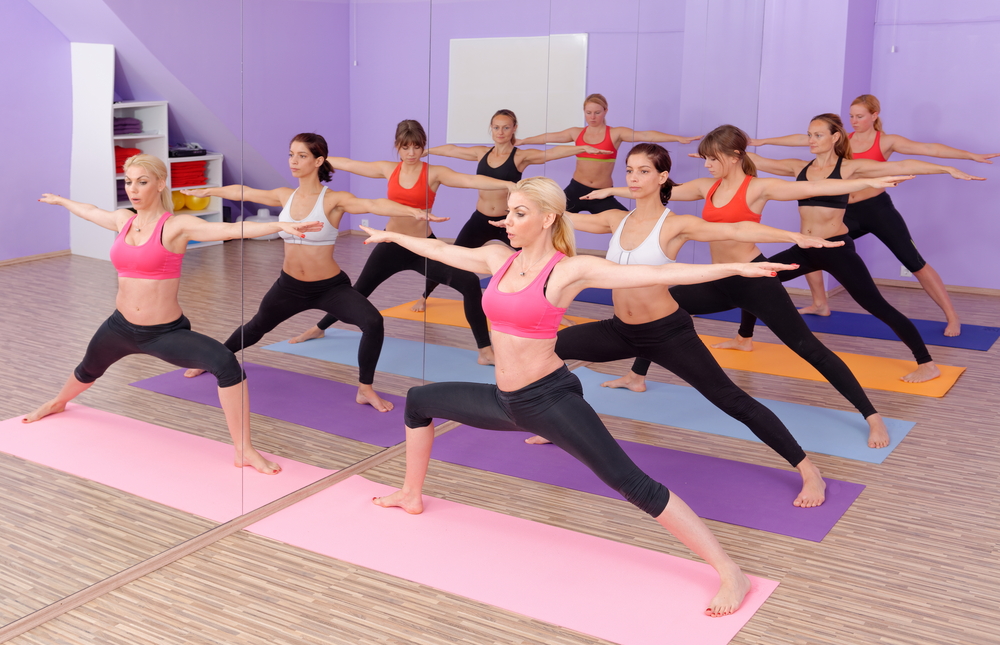What is Bikram Yoga?

Bikram yoga is a form of yoga popularized by Bikram Choudhury in the 1970s in California. The patented practice involves repeating the same 26 poses in set cycles over a 90-minute class. Bikram yoga instructors go through a nine-week training program in which they learn the set practice and dialogue. Currently, there are more than 1,650 Bikram studios around the world.
The poses were chosen by Choudhury from classic hatha poses and are designed to "systematically move fresh, oxygenated blood to 100 percent of your body, to each organ and fiber," according to the official Bikram yoga site. The poses — which include triangle pose, tree pose, eagle pose and cobra pose, among other common hatha yoga poses — should be done in a specific, unchanging order, in order to achieve the desired benefits. This traditional Bikram pose series does not include inversion poses — such as headstands — typically found in yoga classes because it is difficult for beginners to do them safely. In highly advanced Bikram classes, the instructor may lead students in inversion poses.
In most classes, rooms are heated, often up to a sweltering 105 degrees Fahrenheit (41 degrees Celsius) and kept at fairly high humidity (usually about 40 percent). Consequently, Bikram yoga is often called "hot yoga"; however, the two are different. Hot yoga refers to any yoga practice done in a hot room. Hot yoga rooms are often not as hot as Bikram rooms, which Choudhury referred to as "torture chambers."
Bikram yoga follows the 80-20 method and the exhalation method of breathing. With the 80-20 method, you take a full breath, assume the pose and continuously exhale 20 percent of the air through the nose. With the exhalation method, you take a full breath and exhale completely when you have assumed the pose, and continue exhaling while you hold the pose. Both of these breathing techniques are difficult, and most beginners probably will not be able to do them successfully for a while.
Proponents of Bikram yoga claim that the practice yields many benefits, including flushing toxins from the body through sweating, and even helping with weight loss. Additionally, they state that the hot temperature improves blood flow and helps oxygen reach muscle tissue, which may make practitioners more flexible.
Studies have shown that a regular yoga practice can help lessen back pain, sharpen the mind, improve mood and even lower blood pressure. However, no large-scale scientific research has backed up benefits specific to the Bikram practice. Toxins, for instance, are typically flushed out not by sweating, but by the liver and the kidneys, and are removed through urination or bowel movements.
Bikram yoga does have some potential dangers. The profuse sweating involved in the practice can lead to dehydration if practitioners don't drink enough water. A 2012 study in the British Medical Journal Case Reports described a woman who developed seizures and went into a coma after losing so much salt through profuse sweating in a Bikram yoga class. And the increased flexibility can actually be a bad thing, because it can make practitioners prone to overstretching that can facilitate strains and sprains, wrote William J. Broad in "The Science of Yoga: The Risks and the Rewards" (Simon & Schuster, 2012).
Get the world’s most fascinating discoveries delivered straight to your inbox.
Hot yoga can also worsen the symptoms of multiple sclerosis, and people with high blood pressure, diabetes or heart conditions should also avoid it, experts say.
Generally, if someone starts feeling nauseated, dizzy or otherwise ill during a Bikram yoga class, it's a good idea to have some water and take a break.
Still, there's little risk of developing heat stroke during a Bikram yoga class, at least if it's practiced in a room kept between 90 and 95 F (32 and 35 C), according to a small 2013 study by the American Council on Exercise. That study, which tracked 20 people practicing both hot and regular yoga, found virtually no difference in core temperature or heart rate between the two groups. Those practicing the hot yoga, however, did perceive it to be harder, even if their bodies didn't register the increased difficulty.
Jessie Szalay contributed to this article.

Tia is the editor-in-chief (premium) and was formerly managing editor and senior writer for Live Science. Her work has appeared in Scientific American, Wired.com, Science News and other outlets. She holds a master's degree in bioengineering from the University of Washington, a graduate certificate in science writing from UC Santa Cruz and a bachelor's degree in mechanical engineering from the University of Texas at Austin. Tia was part of a team at the Milwaukee Journal Sentinel that published the Empty Cradles series on preterm births, which won multiple awards, including the 2012 Casey Medal for Meritorious Journalism.


